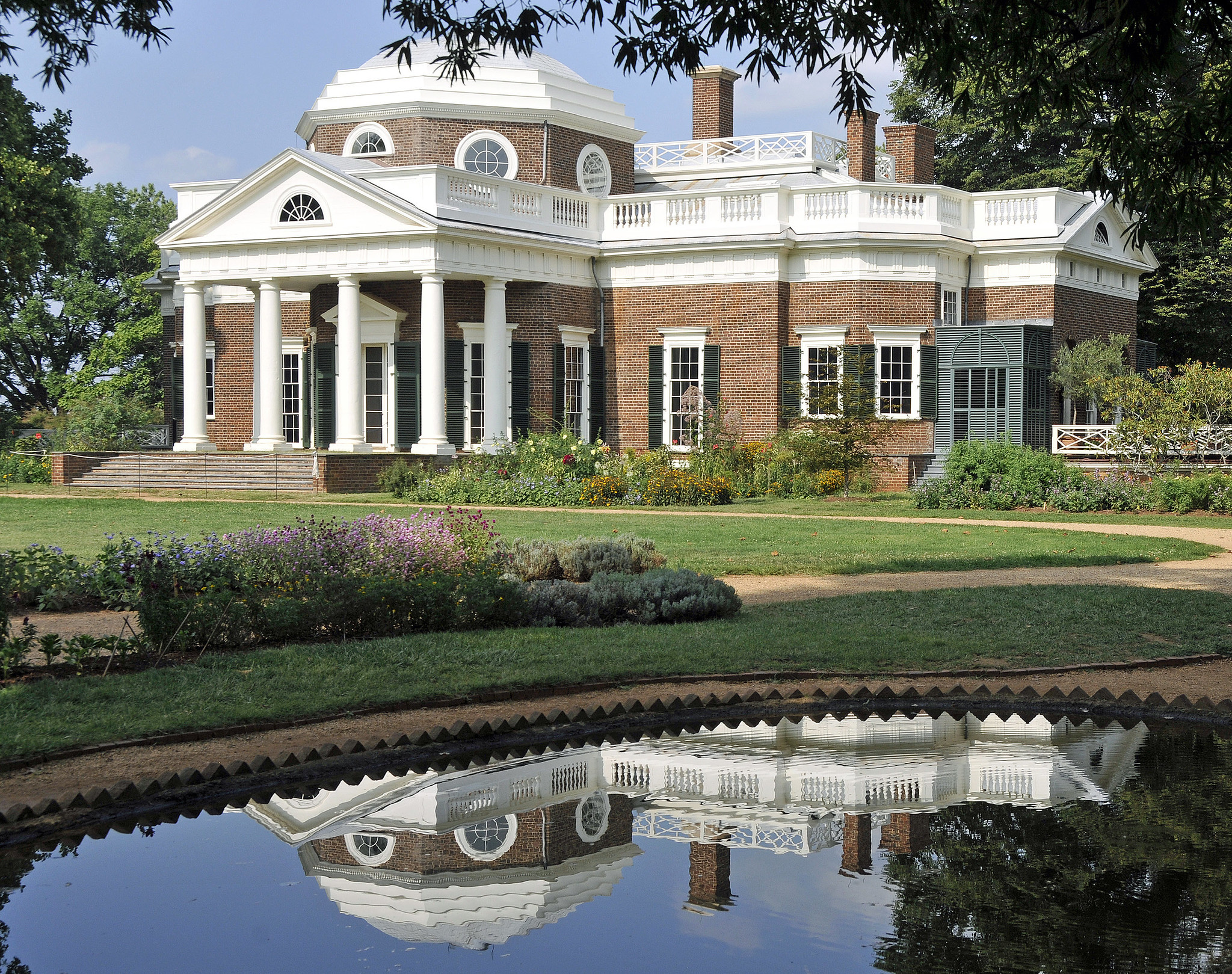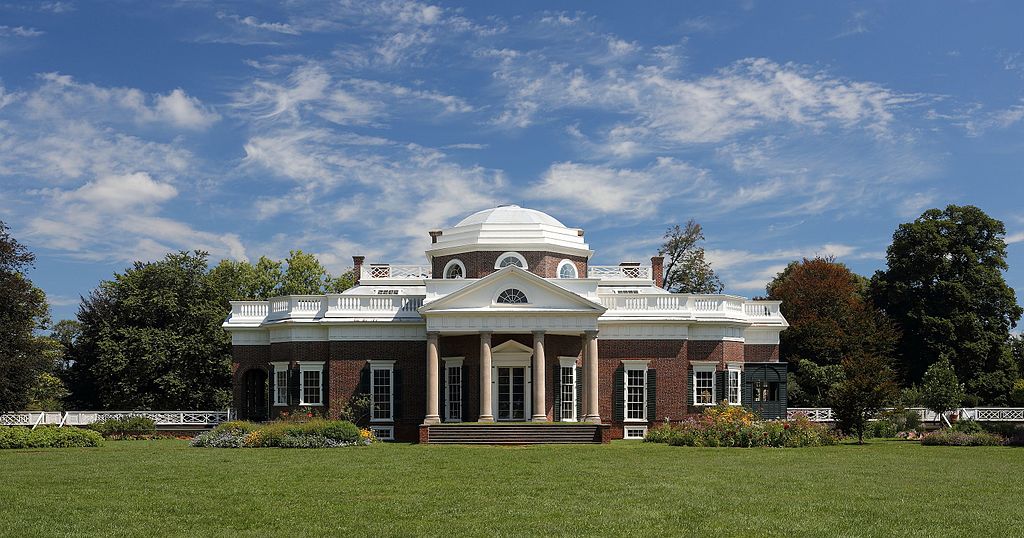
Tour Monticello, Thomas Jefferson’s “Essay on Architecture”
Virginia is home to some of the United States’ most architecturally influential buildings from the state capitol building to George Washington’s home in Mount Vernon. However, the Mother of State’s most iconic and noteworthy building was owned and constructed by another U.S. president: Thomas Jefferson. Jefferson’s Monticello Mansion is considered by many in the architecture world to be Jefferson’s “autobiographical masterpiece”. Nothing better reflects the exceptional mind of Jefferson like this stunning structure and its surrounding grounds.
Monticello Was Jefferson’s Masterpiece
There aren’t many homes in the U.S. that accurately portray the personality and characteristics of their owner. Monticello was a 40-year project that Jefferson undertook after he inherited 5,000 acres of land from his father at the age of 26. The main house was designed by Jefferson, who drew from Neoclassical designs after being inspired by Italian architecture while on a trip through Europe.

A self-taught architect, Jefferson referred to Monticello as his “essay in architecture,” and construction continued on the mountaintop for forty years. The final product is a unique blend of beauty and function that combines the best elements of the Renaissance with a fresh American perspective. In both its frontier mountaintop location and its Roman villa design, Monticello was intentionally a far cry from the other American homes of its day, which were more commonly colonial designs with some foreign influence from England, France, or Denmark. While lauding Jefferson for his impressive architectural eye, it's worth noting that Monticello was built by enslaved people and operated as a plantation for years. Despite this ugly truth, Monticello continued to captivate its visitors as Jefferson sunk deeper into debt. After his death in 1826, his widow, Martha Jefferson Randolph, put Monticello and its furnishing up for sale — including 100 enslaved men, women, and children. Four years later, James Barclay purchased the property for $7,500. Barclay had no interest in the house beyond making it into a silkworm farm, which quickly failed. In 1834, he sold the house and land to Uriah Levy, a U.S. Navy Officer, for just $2,500.
Levy was enthralled, both by Monticello and Jefferson himself, and he dutifully restored the property to its former wonder. Unfortunately, he didn't get to enjoy his new home. Levy died in 1862 and left Monticello to the U.S. government, though it changed hands faster than anticipated. The Confederate government quickly snapped up the property and sold it. After the Civil War ended, Levy's nephew, Jefferson Monroe Levy, assumed ownership of Monticello, and he didn't put the house back on the market until 1923. At this point, the Thomas Jefferson Foundation was formed, and they negotiated to purchase Monticello for $500,000, swearing to continue the Levys' preservationist efforts.
In 1987, Monticello was recognized by the United Nations as a World Heritage Site, the only presidential home in the U.S. to be added to the UNESCO’s World Heritage list. What qualifies a building to be added to this prestigious list? The building must represent a masterpiece of human creative genius and exhibit an important interchange of human values. “On the world’s stage, Monticello symbolizes how Jefferson took Enlightenment ideals about the rights of man and crafted them into a new nation introducing self-government, liberty, and human equality. As the creator of both Monticello and the Declaration of Independence, he introduced world-changing ideas which have given hope to people everywhere,” said Leslie Greene Bowman, President and CEO of the Thomas Jefferson Foundation.
Monticello is also home to historic gardens that were a botanical showpiece, a source of food, and Jefferson’s personal experimental laboratory for ornamental plants from around the world that could later be applied in daily life. Jefferon's plant plans included using plants to cure everything from common ailments like headaches and toothaches to more serious conditions like typhus or yellow fever. If you'd like to take a look for yourself, either at the impressive gardens or the stately rooms, the Thomas Jefferson Foundation offers a variety of tours. Check out their website to learn more.
Real Estate and Architecture: Why Architects Make Great Agents
The worlds of real estate and architecture are not far removed, and they often intertwine. One focuses on sales while the other focuses on design. Architects looking for new career opportunities can find great potential in the real estate business. This move is natural and holds lucrative opportunities for those willing to work for it. One can draw from their personal and professional experiences that can be adopted in other professions.
Qualified architects hold a broad range of knowledge that can easily be applied to selling a property. Architects possess the following key qualities that are applicable to success in real estate:
- An eye for detail
- Strong visual awareness
- A deep understanding of building materials and structures
- Experience with building codes and required permits
With a real estate license, an architect can gain access to home listings while utilizing their diverse network for potential new clients. Becoming a licensed real estate agent isn’t as hard as one might think - you just need to devote some time and energy to your new craft.
Take On 2021 With the Best Virginia Real Estate Courses From The CE Shop
Enroll in our Pre-Licensing program now to get your career started and begin connecting your fellow Virginians with the home of their dreams. Or keep going strong with one of our comprehensive, 100% online Continuing Education packages. Want to stay up to date on everything in Virginia? Join the Southern Real Estate Facebook Group!
The content provided on this website is deemed accurate at the time of creation.


Comments